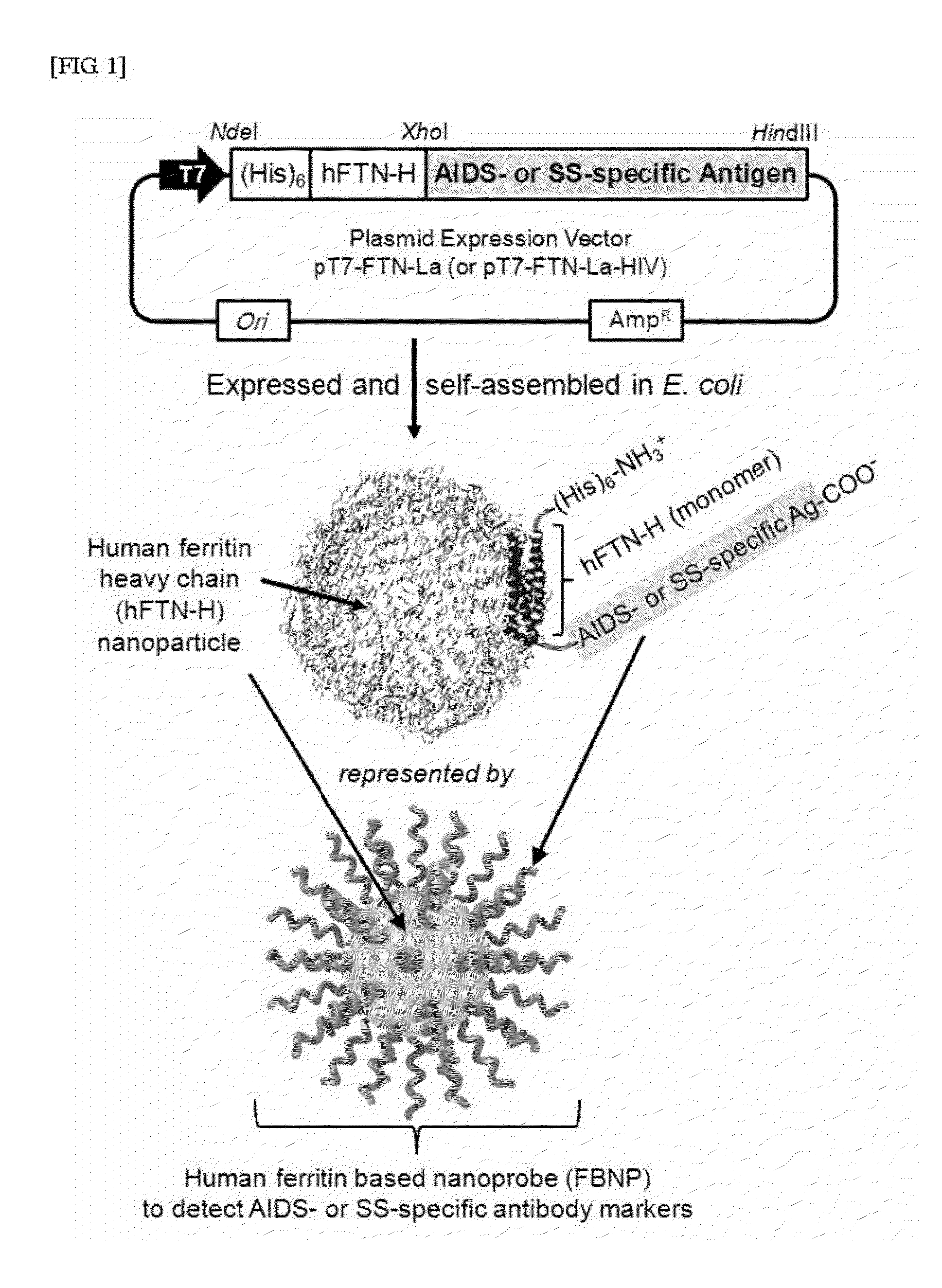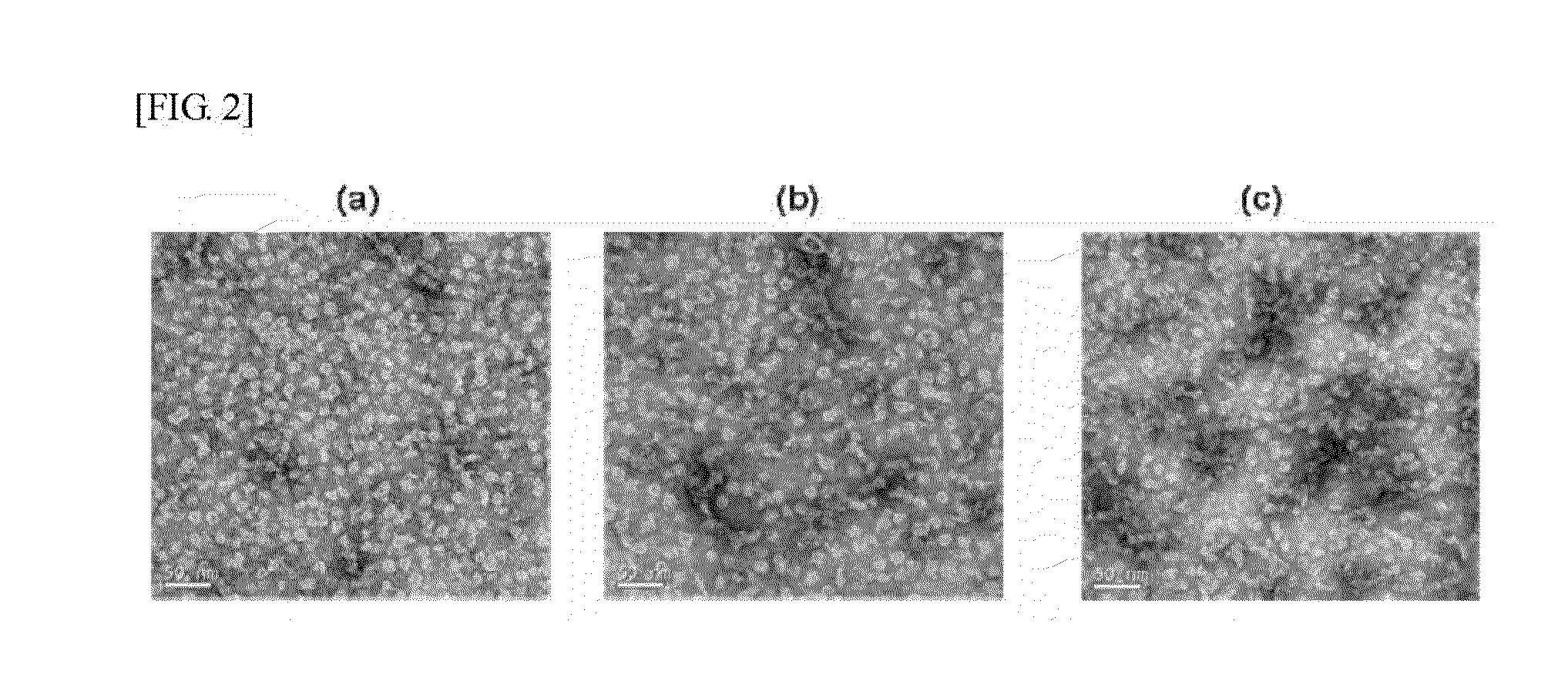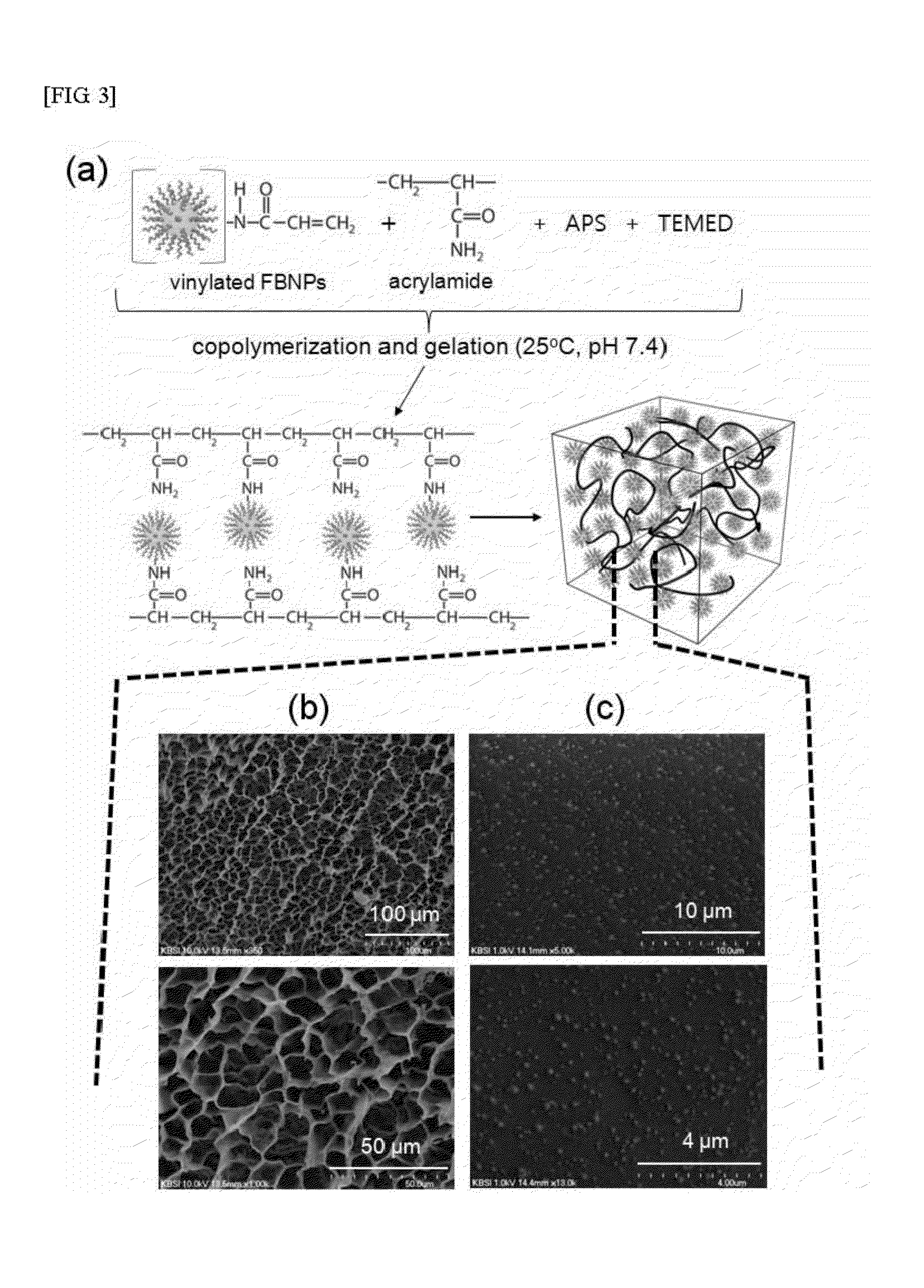Use of protein nanoparticle based hydrogel
a technology of protein nanoparticles and hydrogels, which is applied in the field of use of protein nanoparticles hydrogels, can solve the problems of sharp decrease of stability over time, low specific binding efficiency, and difficulty in quantitative control of the protein probe immobilized on the substrate surface of the protein chip, so as to achieve effective detection of disease markers and increase the surface area to volume
- Summary
- Abstract
- Description
- Claims
- Application Information
AI Technical Summary
Benefits of technology
Problems solved by technology
Method used
Image
Examples
example 1
Manufacturing of Spherical Protein Nanoparticle-Based Hydrogel
[0080](Manufacturing Expression Vector for Synthesis of Spherical Protein Nanoparticle Representing Disease Marker Detection Probe)
[0081]The present inventors selected Sjögren's syndrome and acquired immune deficiency syndrome (AIDS) as model diseases. It is known that these two diseases have different causes but similar symptoms. It is known that AIDS is caused by infection with human immunodeficiency virus (HIV) and serum of an AIDS patient contains various marker antibodies that recognize the HIV as an antigen. In particular, HIV-1 gp41 is an immunodominant region recognized by an antibody. It is known that most AIDS patients have an anti-gp41 antibody. A diagnosis system using a part of this antigen as a detection probe was developed. It is known that if a person is infected with HIV, his / her symptoms may escalate into symptoms (rheumatological manifestation) similar to those of an autoimmune disease patient. It is kn...
example 2
Manufacturing of Protein Nanorod-Immobilized Hydrogel
[0118](Manufacturing Expression Vector for Synthesis of Protein Nanorod Representing Disease Marker Detection Probe)
[0119]A production vector was manufactured by inserting a Sjögren's syndrome autoantibody detection probe (La protein) gene into a carboxyl terminal of a Saccharomyces cerevisiae-derived Sup35 protein known to be in the form of nanorods by self-assembly (FIG. 11(a)), and the production vector was expressed in E. coli so as to manufacture a water-soluble Sup35-La protein monomer (FIG. 11(b)).
[0120]Gene clones for coding NH2-NdeI-hexahistidine-[Saccharomyces cerevisiae-derived Sup35 protein 1-61 (SEQ ID NO:6)]-G4S-BamHI-COOH and NH2-BamHI-[human-derived La protein]-XhoI-COOH (or NH2-BamHI-[human-derived La protein]-[biotin peptide]-XhoI-COOH) were PCR amplified by using an adequate primer and ligated to an NdeI-BamHI-XhoI cloning sites of pT7-7 and pET 28a, so that an expression vector pET28a-Sup35-La (or pT7-Sup35-La-...
PUM
| Property | Measurement | Unit |
|---|---|---|
| Percent by mass | aaaaa | aaaaa |
| Percent by mass | aaaaa | aaaaa |
| Weight | aaaaa | aaaaa |
Abstract
Description
Claims
Application Information
 Login to View More
Login to View More - R&D Engineer
- R&D Manager
- IP Professional
- Industry Leading Data Capabilities
- Powerful AI technology
- Patent DNA Extraction
Browse by: Latest US Patents, China's latest patents, Technical Efficacy Thesaurus, Application Domain, Technology Topic, Popular Technical Reports.
© 2024 PatSnap. All rights reserved.Legal|Privacy policy|Modern Slavery Act Transparency Statement|Sitemap|About US| Contact US: help@patsnap.com










